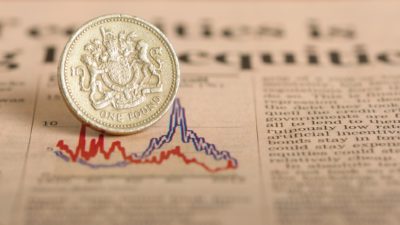As the legendary investor behind Berkshire Hathaway, Warren Buffett has long been admired for his calm, common-sense approach to building wealth. Known for his long-term mindset and disciplined strategy, he famously adheres to a simple rule: “Be fearful when others are greedy, and greedy when others are fearful.”
This philosophy was key to the actions he took during the 2008 financial crisis, when fear paralysed other traders. In an op-ed for The New York Times titled “Buy American. I Am.”, Buffett explained why he was investing heavily despite widespread panic. His reasoning was straightforward: while markets may decline in the short term, the US economy tends to recover over time. So those who remain invested will benefit eventually.
A rational, long-term mindset
Buffett’s success comes from a few key principles that he follows:
- Choose the business, not the stock: he looks for companies with strong fundamentals, competitive advantages (an economic moat), and experienced management teams.
- Think long term: rather than trying to time the market, Buffett buys with the intention of holding forever, focusing on value and future potential.
- Stay rational: he avoids emotional decisions, even during market crashes, preferring patience and perspective over panic.
This approach remains especially relevant in today’s uncertain economic climate. With high interest rates, slowing global growth, and geopolitical tensions, investors may be wondering where to find safe opportunities.
One company to consider is Amazon (NASDAQ: AMZN). It fits Buffett’s preference for durable, well-managed businesses that exhibit long-term staying power.
A safe-haven option in 2025
Though famously slow to warm up to tech, Buffett’s Berkshire Hathaway eventually bought into Amazon in 2019. I guess the alluring strength of its economic moat was too much to ignore. Today, with markets uncertain and economic challenges building, the world’s largest online retailer exhibits the kind of long-term quality Buffett favours.
In its most recent quarterly results, it posted net sales of $170bn, up 14% year on year, with operating income more than doubling to $13.2bn. Much of this growth was driven by Amazon Web Services (AWS), its cloud computing division, which now accounts for nearly 60% of total operating profit.
Despite a near $2trn market cap, the stock still trades at a price-to-sales (P/S) ratio of around 3.2 — a decent level considering its growth and cash flow strength. Free cash flow over the trailing 12 months reached $36.8bn, highlighting operational efficiency and investment potential.
Amazon also holds over $80bn in cash and marketable securities, giving it a cushion to weather macroeconomic turbulence. Its strong logistics network, Prime subscription model, and dominance in cloud computing give it multiple levers for growth.
But not entirely safe
As with any investment, Amazon carries specific risks that must be weighed up by those considering the stock. Regulatory scrutiny in the US continues to grow, especially around antitrust concerns. Its e-commerce margins remain under pressure from inflation, which is compounded by growing competition. Smaller outfits are emerging that aim to challenge Amazon’s market share with lower-priced alternatives.
Most notably, while AI is devouring cloud services right now, an unexpected slowdown could reverse AWS growth.
Nonetheless, for long-term investors seeking stability in uncertain times, Amazon’s scale, diversification, and proven adaptability make it a compelling option to consider.








